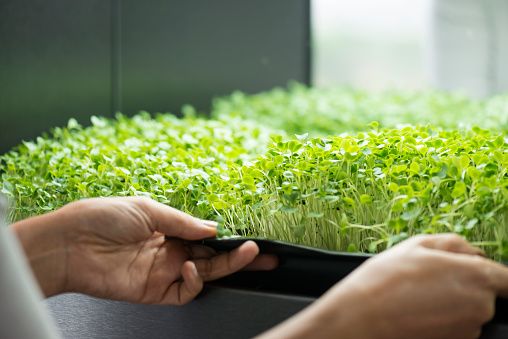The Fascinating World of Microplants
The Fascinating World of Microplants
When we think of plants, we often imagine towering trees, colorful flowers, and lush green fields. But did you know that there is an entire world of plants that is invisible to the naked eye? These are microplants, tiny organisms that play a crucial role in the biodiversity of our planet. In this article, we will delve into the mysteries of the micro world and explore the incredible diversity of microplants in nature.
What are Microplants?
Microplants, also known as microphytes, are microscopic plants that can only be seen under a microscope. They can be found in various habitats, including freshwater, marine environments, and even on land. Despite their small size, microplants are incredibly diverse and can be classified into different groups, including algae, fungi, and mosses.
The Diversity of Microplants
Microplants come in a wide range of shapes, sizes, and colors. Let’s take a closer look at some of the most fascinating microplants and their unique characteristics:
1. Algae
Algae are a diverse group of microplants that can be found in both aquatic and terrestrial environments. They can be single-celled or multicellular and can range in size from a few micrometers to several meters long. Algae play a vital role in the ecosystem as they are responsible for producing a significant portion of the Earth’s oxygen through photosynthesis.
2. Fungi
Fungi are another group of microplants that are widely distributed across the globe. They can be found in various habitats, including soil, decaying organic matter, and even on the surfaces of other plants. Fungi are essential for nutrient recycling in ecosystems and are involved in the decomposition of organic materials.
3. Mosses
Mosses are small, non-vascular plants that can be found in damp environments such as forests, swamps, and rocks. They are characterized by their unique reproductive structures and ability to retain water. Mosses play a crucial role in preventing soil erosion and providing habitats for other organisms.
The Importance of Microplants
Although microplants may be small in size, their ecological importance cannot be overstated. Here are a few reasons why microplants are essential for the health and balance of ecosystems:
1. Oxygen Production
Microplants, particularly algae, are responsible for a significant portion of the oxygen production on Earth. Through photosynthesis, they convert carbon dioxide into oxygen, playing a crucial role in maintaining the atmospheric balance necessary for life on our planet.
2. Nutrient Cycling
Microplants, such as fungi, are involved in the decomposition of organic matter, breaking it down into essential nutrients that can be used by other organisms. They play a vital role in nutrient cycling, ensuring that essential elements are recycled and made available to support the growth of other plants and animals.
3. Habitat Creation
Microplants, like mosses, create habitats for a variety of organisms. Their ability to retain water and provide a stable substrate allows other plants and animals to thrive in environments that may otherwise be inhospitable.
Exploring the Micro World
Studying microplants is no easy task. It requires specialized equipment, such as microscopes, and a deep understanding of their unique characteristics. However, advancements in technology have made it easier for scientists to explore the micro world and uncover its mysteries.
By studying microplants, scientists can gain insights into the intricate relationships between organisms, understand the impact of human activities on ecosystems, and discover new species that may hold potential for medical or industrial applications.
Conclusion
The world of microplants is a captivating one, full of diversity and hidden wonders. From algae to fungi and mosses, these tiny organisms play a vital role in maintaining the balance of our ecosystems. By exploring the micro world, we can gain a deeper appreciation for the intricate web of life that exists on our planet.
So, the next time you take a walk in nature, remember to look closely, for there is a whole world of microplants waiting to be discovered.
